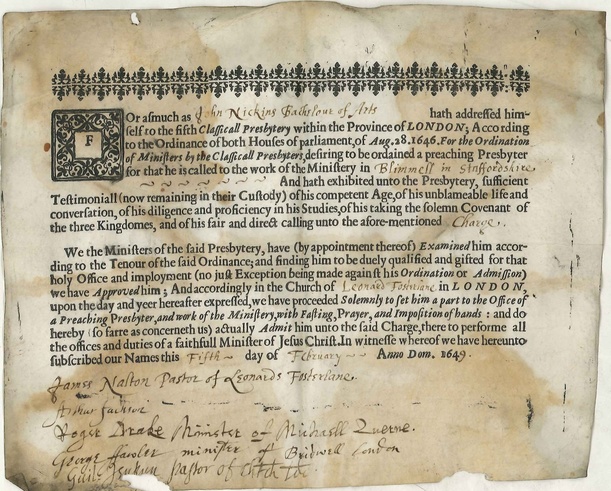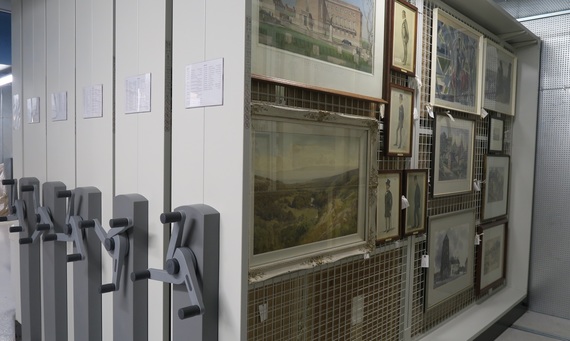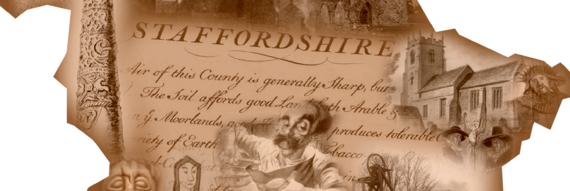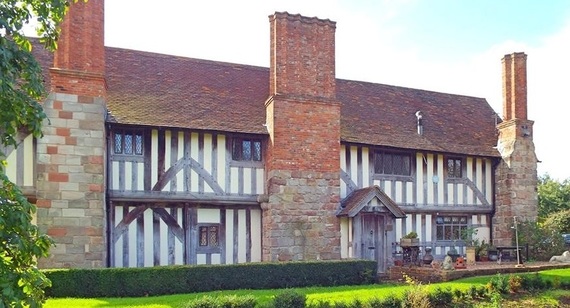 Doulton Now Described!
Following on from the launch of the Minton Archive by Stoke-on-Trent City Archives back in 2015, the Royal Doulton Archive cataloguing project ‘Doulton Described’ (funded by the National Cataloguing Grants Programme for Archives) is now approaching its conclusion and the archive is ready to be explored.
Over 3,300 records are currently available on our online catalogue. Archivist Louise Ferriday and the Stoke Archives Team have spent much of the last 4 years working on the Minton and Doulton archives, and for the past 22 months Louise has been cataloguing the Royal Doulton Archive. This Archive has endured several moves during its lifetime, so organising the archive into a meaningful and accessible structure which reflects the operation and history of the company has been very challenging. The Royal Doulton Company have operated factories in multiple locations during its existence, but the majority of this archive are the records of the Burslem factory, although there are records of the business established in Lambeth and representations of most of the other factories within the archive.
There are many interesting parts to this archive, but perhaps the two sections of the collection where the energy and inspiration of the man responsible for developing the firm of Royal Doulton, Sir Henry Doulton, still lives on, is in the records of Production and Sales and Marketing. Sir Henry being a well read, creative individual was not only an astute businessman, but also an inventor. He attracted and retained talented individuals to work with him and develop the business beyond his tenure. The patterns in some of the pattern books are works of art in their own right. The range of ceramic items produced by the company is vast and extraordinary, everything from drainpipes, baths and water filters to exquisite art wares and sculptures. Almost every popular fictional character and media personality appears as figures, collector plates and character jugs.
So why not have a look at our online catalogue? Come and visit Stoke-Archives, and start discovering the Doulton Archive for yourself.
 Discovering More about Our Collections
We are continuing to look at documents that were not previously catalogued in detail. Amongst the clergy ordination papers is a small bundle relating to the Commonwealth era during and after the Civil War. Things were done a bit differently then. There was no church registration of baptisms, marriages and burials, and the priests were not ordained by Bishops. These documents are examples of what happened instead, under an Act of Parliament of 1645 which refers to preaching presbyters appointed under Orders from the Classical Presbytery.
Testimonials were received from a church at which the candidate was known, that he was of competent age, of unblameable life and conversation, diligent and proficient in his studies, and testifying of his taking the solemn Covenant of the three Kingdoms, and of his fair and direct calling. The documents are signed by pastors or ministers from other areas from where the candidate has come. This candidate is going to work at Blymhill in 1649.
 An air handling system controls the environment in the art store.
Behind the Scenes at the Museum - Environment
The members of the museum team are happy to sit in a nice cosy, warm office (sometimes with a cuppa) and get on with the day's work. But the environment that makes us feel comfortable is not necessarily right for the objects we care for. This month we are taking a closer look at the importance of maintaining the correct environmental conditions for our collections.
There are two main factors that we have to be aware of. Incorrect temperature and incorrect humidity. Both of these can be damaging to collections over time. Temperatures that are too high, too low or fluctuate can increase the rate of chemical reactions and cause an object to decay more rapidly, cause surfaces to become brittle or put stress on the objects resulting in glues failing. They can also encourage pests to breed (more on that next month).
Relative humidity, RH, is a measure of the amount of water held by air at different temperatures. The RH affects objects in several ways. High RH levels (damp air) can cause organic materials to expand and metals to corrode. Mould growth can occur if high levels are maintained for any length of time. Low RH levels (dry air) can cause organic materials to dry out, resulting in splitting or cracking. Light is excluded from the store because it would cause fading and catalyse deterioration of materials as described in more detail in last month’s newsletter.
The key to all this is monitoring. We use dataloggers to record what the environment is doing and wherever possible heating and air handling systems to maintain a stable temperature and RH. This is particularly important for our fine art and photographic collections. Our ideal is to achieve a constant 15c and 50%RH. We can be confident that while we might enjoy the fluctuations that the weather and our office heating system provide our collections have a stable environment all of their own!
Volunteer Projects
The Ladies of Llangollen and their Links to Weston Park - Joy Pownall
I have been a volunteer at Weston Park for four years and as well as house guiding during the summer I also spend most Wednesday mornings at Staffordshire Record Office looking at the Bradford Collection under the guidance of Rebecca Jackson and Gareth Williams (Curator and Head of Learning at Weston Park). Rebecca recently asked me to look at the correspondence of the 4th and 5th Earls and Countesses who spanned the late Victorian and early 20th century periods.
Joy sharing her latest find with June at the Record Office
As well as adding detail to the catalogue I look for information which might be of specific interest to Weston Park. It is often the things you come across by chance that are equally if not more interesting than the things you are looking for! In a bundle of correspondence of the 4th Earl I discovered 4 letters written by the Ladies of Llangollen.
The story of the Ladies of Llangollen is well documented. They were known, amongst other things, for living as recluses although they received many visitors including several Romantic poets, Josiah Wedgwood and the Duke of Wellington! In her diary Lady Elizabeth makes a brief reference to visiting the Ladies of Llangollen in 1786: “Friday ye 6th we breakfasted at Chirk & got to Langollen by 6 o clock dinner where we repaird on a visit to the [Ladies]"
The Ladies were not so keen on travelling to visit others which makes these letters especially interesting because it proves they actually visited Weston Park: “We retain a too grateful remembrance of the delightful hours We spent at Weston”.
Having looked at the many diaries of Lady Elizabeth Bridgeman written in the late 18th century it was even more fascinating to see this correspondence and to be able to compare the two sets of letters and diaries. In her 1784 diaries and letters to her husband Lady Elizabeth talks of her daughter’s illness and marriage break up, and her family’s financial difficulties. Like any parent she would give up everything for her children’s health and happiness. “I can live upon £50 a year and you upon a hundred rather than have our children miserable. Wales is a cheap country and the two recluses [the Ladies of Llangollen] will be pleasant society.”
In a letter dated 3rd December 1784 the Ladies wrote to Miss Bridgeman, responding to her account of a stormy and dangerous sea crossing to the continent. “The frequent and Violent Tempests which resounded most awfully amidst our mountains penetrated us with apprehensions for your safety, I do not know when we experienced a more Heartfelt Satisfaction than in receiving a letter from our Dear Mrs Bridgeman which contained the Joyful intelligence of your being landed at Calais. What shou’d we not have suffer’d cou’d we have foreseen that you were in still greater danger on the Continent. But I now Trust that all your fears and perils are at an end, and most sincerely do we Congratulate you on the Joyful meeting of all your Family at Paris”
The letters give many insights into the ladies’ characters including their difficult financial situation. The language they use is florid and written in the popular “sentimental” style of the late 18th century. They are almost obsequious in their deference to Lady Bridgeman as this extract shows; “Before we attempt to thank you Dear Madam, for the contents of the Box, which We this day received, permit us to assure your La’ship, that we shall ever retain a too grateful sense of your kind and most flattering notice to make any Token necessary to remind us of it . . . The vase is placed in the centre of our Library chimney it is much too precious to us as your La’ships Gift exclusive of its intrinsic Value, to Hazard its being liable to any injury which might happen were it to continue in the Parlour. The Egg Cups are too beautiful be made use of on days of Abstinence. They shall be carefully preserved for a Festival, as such, a visit from Lady Bridgeman must be celebrated at Plas Newydd. They shall never be used but when you, Dear Madam, gild our Cottage with your presence”
A note of warning if you would like to read the letters, they are written in miniscule handwriting. I had to read them all through a magnifying glass!
Events
 Staffordshire History Day - Saturday 11th May
Join us at Entrust HQ, Riverway Centre, Stafford on Saturday 11 May. The Staffordshire History Day, now in its seventh year, provides an overview of recent work into Staffordshire’s* history and offers networking opportunities for local historical societies, students and others interested in the county’s history. Our keynote speakers are Dr Nigel Tringham (VCH Staffordshire, Keele University) 'A History of Tamworth' and Ruth Singer 'Criminal Quilts'. The day also features updates on a range of research projects and the latest news from the County Archaeologist and Archives and Heritage Service.
Refreshments and lunch are included. Tickets cost £25 and must be booked in advance. For booking details and to find out how to get the full programme for the day visit our website.
 FoSSA Visit to Sinai Hall, Burton on Trent - Wednesday 10 April, 2.30pm
Sinai Park is a Grade II* timber framed building dating back to the 15th century and has a reputation for being very haunted! Sinai was included in the many estates acquired by the Paget family in 1546. William Paget, one of Henry VIII’s chief ministers, was also installed as the first Baron of Beaudesert. The Paget family would continue to own Sinai for almost 400 years and was used principally as a hunting lodge with its own deer park.
Sinai enjoyed viists from a number of important guests including the Earl of Essex during the reign of Elizabeth I. The main central section which joined the two existing wings together to form a much larger property, was built by the Pagets in 1605, elevating the house to a much grander status. In the 1700s there was still more building work with large Tudor-style chimneys being erected which added further to its grandeur.
The house is in the process of active restoration although one wing has been fully completed. We shall tour this wing see the plans for restoration and view the exterior of the other parts of the property. Refreshments will be provided. Members £8. Non-members £9.50.
To book a place please send your name, email contact, address and telephone number together with the number of tickets you require and a checque payable tp FoSSA to Richard Totty Rock Cottage Redhill Rugeley WS15 4LL including a SAE for receipt.
Our aim is to keep you updated with the latest developments and events. If you do not wish to receive this newsletter please use the 'unsubscribe' button at the bottom of this page.

|